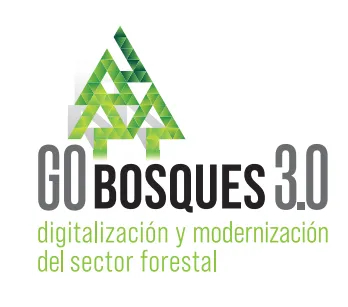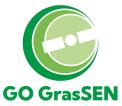
FORESTS 3.0 Operational Group: Digitalization and remote sensing of the sustainable use, biodiversity, and resilience of Spanish forests
- Type Operational group
- Status Filled
- Execution 2023 -2025
- Assigned Budget 352.139,2 €
- Scope Supraautonómico
- Autonomous community Andalucía; Aragón; Asturias, Principado de; Cantabria; Castilla y León; Castilla - La Mancha; Cataluña; Comunitat Valenciana; Extremadura; Galicia; Madrid, Comunidad de; Murcia, Región de; Navarra, Comunidad Foral de; País Vasco; Rioja, La
- Main source of financing CAP 2014-2020
- Project website https://www.pefc.es/que-hacemos/nuestro-impacto-colectivo/nuestros-proyectos/go…
BOSQUES 3.0 promotes the creation of new IT tools for the sustainable management and enhancement of Spanish forests. It includes digitization and registration of forest areas, remote sensing of changes in national vegetation cover, and strengthening the forestry-industry partnership.
- Digitization and registration of national forest areas with a guarantee of sustainable management for target users
- System for identifying changes in vegetation cover using remote sensing techniques to improve resilience, biodiversity, and sustainable use of forests
- Strengthening and improving forest and forest product value chains. Enhancement of social and economic aspects.
- Comprehensive tool for managing and monitoring the certification process, integrating digital mapping of certified surfaces and automatic characterization
- Image processing chain implemented in cloud technology, change mapping, remote sensing information available on the platform and updated image based on Sentinel 2
- Coordination between users and agents, strengthening forestry and industry, and creating the "Open Bosques" web portal for viewing sustainably managed forest areas in real time.
R1 Comprehensive tool for managing and monitoring the PEFC certification process
The GO has developed a responsive web application, the "Online Registration Platform for PEFC Certified Forest Areas," aimed at forest owners and managers. This tool enables the monitoring and control of sustainable forest management and PEFC certification. Building on the existing system, the development environment has been updated to improve usability, security, and performance through emerging open source technologies. Furthermore, new features suggested by users have been successfully implemented in the production version.
The platform enables the digital registration of certified forest areas in Spain, ensuring data standardization, traceability, and monitoring of the certification process, including audits and updates of certified area records. It also facilitates the integration of cartographic data for all certified forest areas.
The final version is hosted on PEFC Spain's servers and includes three improved user profiles: 39 applicant entities, 2 certification bodies, and 5 administrators. Once the production version is fully functional for all users, a direct access link will be created on the PEFC Spain website: https://www.pefc.es/area-privada . The platform guarantees data reliability, certification oversight, and provides relevant information for sustainable forest management.
R2 Integration of Digital Mapping of Certified Areas and Automatic Characterization Based on External Environmental and Socioeconomic Databases
To integrate the mapping component into the PEFC registration platform, methods and processes for digital mapping of certified areas were implemented in the application. As a result, functionalities for the automatic uploading, maintenance, and characterization of digital maps were developed.
A first feature allows geometries to be generated from the Activity Registry module based on the provided cadastral references. An M2M connection is established with the cadastral service to download the geometry associated with each reference. A second option allows the geographic component to be uploaded using an ESRI Shape file template, one of the most common formats used by technicians in charge of these activities. In this way, the boundaries of each Forest Management Unit are incorporated into the Registry Platform.
Once the certified area's mapping is available, external data sources are selected for cross-referencing. The selected data sources include the Spanish Forest Map, the Natura 2000 Network, the Network of Protected Natural Areas, and socioeconomic data from the National Institute of Statistics (INE). These sources are used to generate datasets that provide relevant and valuable information for the management of certified areas, enriching the data and providing managers with new criteria for decision-making.
Finally, the platform features a map viewer that allows users to view all the generated thematic maps.
R3 image processing chain implemented in the cloud. R3 focused on the successful implementation of the image processing chain using cloud technology, specifically Google Earth Engine (GEE). User requirements were identified through meetings and surveys and integrated into the system design (R3-A1). Cloud-based pipelines for Landsat and Sentinel-2 imagery were developed, enabling scalable and cost-effective forest monitoring (R3-A2, R3-A3). Sentinel-2 provided higher spatial, temporal, and spectral resolution. Sentinel-1 was also tested, although current limitations in processing time were noted.
Change detection algorithms were evaluated, and CCDC was preliminarily selected for its effectiveness with Landsat and Sentinel-2 time series (R3-A4). NBR, NDVI, and WETNESS were validated as the most suitable vegetation indices (R3-A5). Random Forest was selected for change classification and implemented in GEE with integrated validation tools (R3-A6, R3-A7). Cloud processing and change detection provide scalable and cost-effective tools for forest certification monitoring. End-users, such as certifiers, managers, and auditors, can benefit from automated and reliable detection of vegetation changes, minimizing fieldwork. These tools enable frequent and accurate forest monitoring, support certification compliance, and improve management decisions.
R4 Change Mapping. R4 focused on implementing a national change mapping workflow, which included defining minimum areas of detectable change and generating, classifying, and validating change maps in both pilot and non-pilot provinces. A minimum mapping unit of 0.5 ha was established, with improved detection up to 0.27 ha in northern regions (R4-A1). Customized databases were developed, and field data from project partners were validated using photointerpretation. Change maps for 2017–2021 were produced in Asturias, Huesca, Seville, and Pontevedra using high-resolution imagery for accurate validation (R4-A2). Validation with stratified sampling and high-resolution imagery confirmed detection accuracy at all sites (R4-A3). The detected changes were classified into four categories: clearcutting, thinning, coppicing, and fire, using Random Forest models trained with variables obtained from the CCDC outputs (R4-A4). Classification accuracy varied across regions, ranging from 62% to 83%, with coppicing and coppicing being the most challenging classes (R4-A5). National-scale validation confirmed the system's scalability and identified areas requiring refinement (R4-A6).
The implementation of this national change mapping workflow provides an automated, transferable, and cost-effective system for monitoring certified forest areas at the national level. End users, such as forest managers, certification bodies, and public authorities, can integrate these validated tools into their workflows to monitor forest change more accurately and frequently, thereby improving decision-making, regulatory compliance, and transparency of forest resources.
R5 remote sensing information was available on the platform and updated Sentinel-2-based imagery was updated. R5 focused on the integration and visualization of remote sensing data within the PERGAMO platform. Interoperability was achieved between the change detection/classification system (developed in Google Earth Engine) and the PERGAMO platform. Despite initial plans to use Sentinel-2 imagery, Landsat time series were selected due to the greater historical coverage and technical limitations of Sentinel-2 in GEE. The results were integrated into PERGAMO, allowing for internal and external audit testing and improved technical performance (R5-A1, R5-A2).
National mosaics of classified changes (clearcuts, thinning, clearing, and fires) were published semiannually using a WMS viewer developed with GeoServer (R5-A3). The PEFC certified areas register now includes a "Change Monitoring" section, offering tabular and cartographic visualizations, filters, and access to raster layers from the WMS. A simplified intensity scale (low, medium, high) was implemented for ease of interpretation. The collaboration allowed for improved interface and usability testing in real-world settings.
R6 Coordination between users and stakeholders. This outcome 6, along with outcomes R7 and R8, falls under Specific Objective 3: "Strengthening and improving forest and forest products value chains. Improvement of social and economic aspects," and focuses on user training on the set of tools developed within the project. A total of 8 training workshops were held for representative entities of forest management certification bodies, certification bodies and auditors, consultants specializing in forest management, members of PEFC Spain, and young professionals.
R7 Forest Strengthening – Industry. The work has focused on developing processes that allow for transparent and efficient connection between certified land and the industry that consumes potential resources.
In collaboration with the various stakeholders involved, the necessary data has been identified to strengthen the connection between forestry and industry. Two public search engines have been developed, one focused on certified entities and the other on land area. These allow real-time consultation of the entire database of certified land areas in Spain under Sustainable Forest Management. Search formats and information download options have been defined, allowing information to be filtered by forest, province, or municipality, and generating detailed reports in PDF and Excel formats. For ease of use, a highly intuitive interface has been created, with rapid response times and highly enhanced security. These search engines are integrated into the PEFC website and are also adapted for access from mobile devices.
Forest Management Certificate Search Engine: https://buscador-gfs.pefc.es/
Surface search engine: https://buscador-montes.pefc.es/
R8. Development of the “Open Bosques” web portal for real-time visualization of sustainably managed forest areas
As a result of this initiative, the publicly accessible web portal "ObservaPEFC" was developed, which aims to disseminate open and updated data in real time. This portal is fed directly from the information stored in the PEFC-certified areas registration platform (PERGAMO) and, through integration with other data sources and thematic maps, provides valuable information highlighting the importance of forests and their connection to social, environmental, and economic aspects.
During the development process, the most relevant data sources were selected, including the Spanish Forest Map, the Natura 2000 Network, and data from the National Institute of Statistics (INE). In parallel, the methodologies for SQL queries and the generation of tables and views in PostgreSQL/PostGIS databases were optimized.
The portal, available at www.observaPEFC.es and developed with Power BI, includes an introductory page explaining its objectives and functionalities, along with seven thematic interactive dashboards. These dashboards allow users to view certified forest areas in real time and analyze their evolution according to various criteria, such as the number of forest managers and management units, ownership types, and geographic distribution.
In addition, the portal offers detailed information on certified areas, including the quantification and distribution of forest types and species, levels of protection (Natura 2000 Network and other designations), and the characteristics of the municipalities where certified forests are located, including their degree of depopulation.
RD1: Communication and dissemination materials. Ten press releases were prepared and sent to a database of more than 850 media outlets (general and specialized), capturing the project's milestones and important actions throughout its development. Five videos were produced with information about the project and how the tool works and published on PEFC's YouTube channel, website, and other social media platforms. Ten interviews were also conducted with experts, applicant members, and project collaborators, which were published on the PEFC website.
RD2: Outreach campaign
A section dedicated to the project has been created on the PEFC Spain website (www.pefc.es), where all related information, news, materials, etc. are available.
PEFC coordinated the design of the project's visual identity and graphic materials (poster, brochure (digital and print versions), roll-up banner, and PowerPoint template), for which it contracted the services of IDAGEM (JJ RIVAS ID ART, SL).
A total of 1,000 copies of the brochure, 20 A2 posters, and two roll-ups were printed. These materials were distributed at events and other occasions where the project was presented, as well as at stands during various trade shows and outreach sessions.
Three scientific articles were written and published in specialized media.
To promote the project, the partners organized nine events, meetings, and webinars aimed at their stakeholders, clients, and members.
The 11 news items generated by the project were published in the quarterly "PEFC News" newsletter, which reaches more than 2,600 recipients. These items were also published in the news section of the project website.
In addition, the partners participated in a total of 12 third-party events to present the project and explore synergies with other similar initiatives.
RD3: Conferences.
The operational group organized an official project presentation event at the University of Valladolid campus in Palencia, as part of the parallel events organized within the framework of the International Conference on Artificial Intelligence and Ecosystem Management. PEFC partners Inca Medio and Agresta presented the project to attendees comprised of international students and researchers, more than 30 students from the Dataforest and Medfor programs, and international researchers. The presentation was also streamed and attended by another 20 attendees. The operational group is also organizing a webinar to present the project results on February 5, 2025. The online meeting brought together certified entities, certifiers, forest management consultants, project members, collaborators, and other stakeholders from the forestry sector, with the aim of sharing the innovative tools developed and discussing their practical application for sustainable and digitalized forest management.
During the event, the newly developed platforms and systems were presented, along with remote sensing capabilities applied to detecting changes in vegetation cover, the PEFC Observa platform for public consultation of forest data, and improvements to the new Spanish Forest Certification System.
The event also allowed for questions to be answered and feedback from the sector on the tools presented to be gathered.
RD4: Social awareness.
PEFC coordinated the publication on social media and the YouTube channel. 375 posts about the project were recorded on the following social media platforms: X, LinkedIn, Facebook, and Instagram. Project results and information were reported by various media outlets, from general media to other sectoral media. Dissemination and impact in the archived media were monitored in a clipping report with more than 40 entries.
- Coordinator/entity name: Association for Spanish Forest Certification (PEFC Spain)
- Coordinator/entity email: pefc@pefc.es
- Entidad Aragonesa Solicitante de la Certificación Forestal (PEFC- ARACERT)
- ENCE, Energía y Celulosa S.A.
- Dirección General de Infraestructuras Rurales y Montes - Consejería de Medio Rural y Cohesión Territorial -Principado De Asturias
- Asociación para la Certificación Española Forestal (PEFC España)
- Agresta Sociedad Cooperativa
- Inca Ingeniería del Medio S.L.
- Entidade Galega Solicitante da Certificación Forestal (EGS)
- Pradifir S.L.
- Universidad de Oviedo





